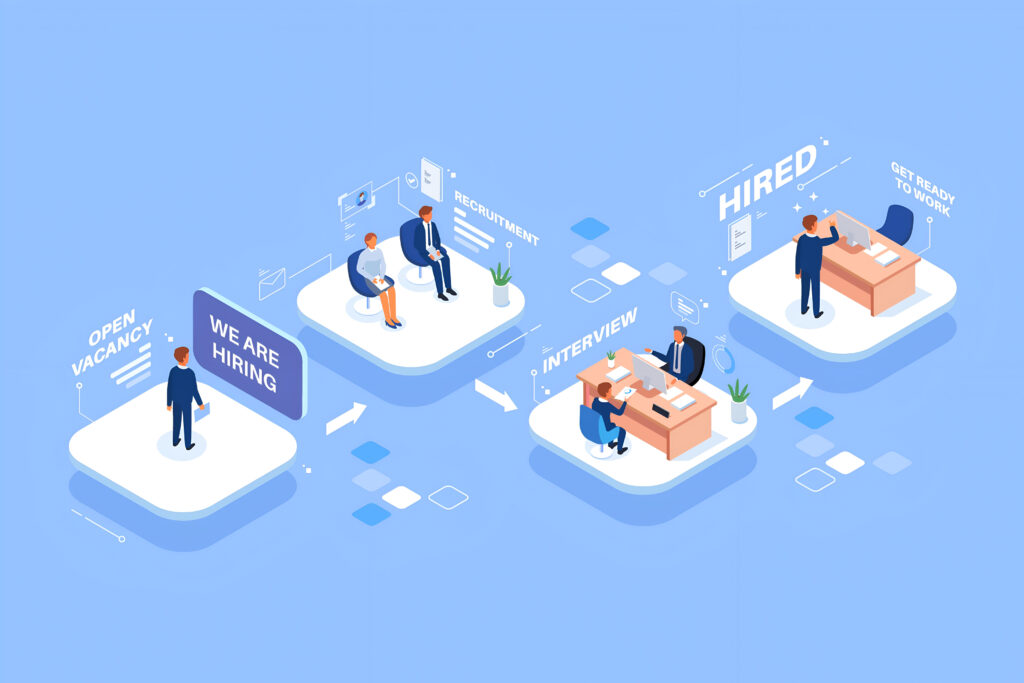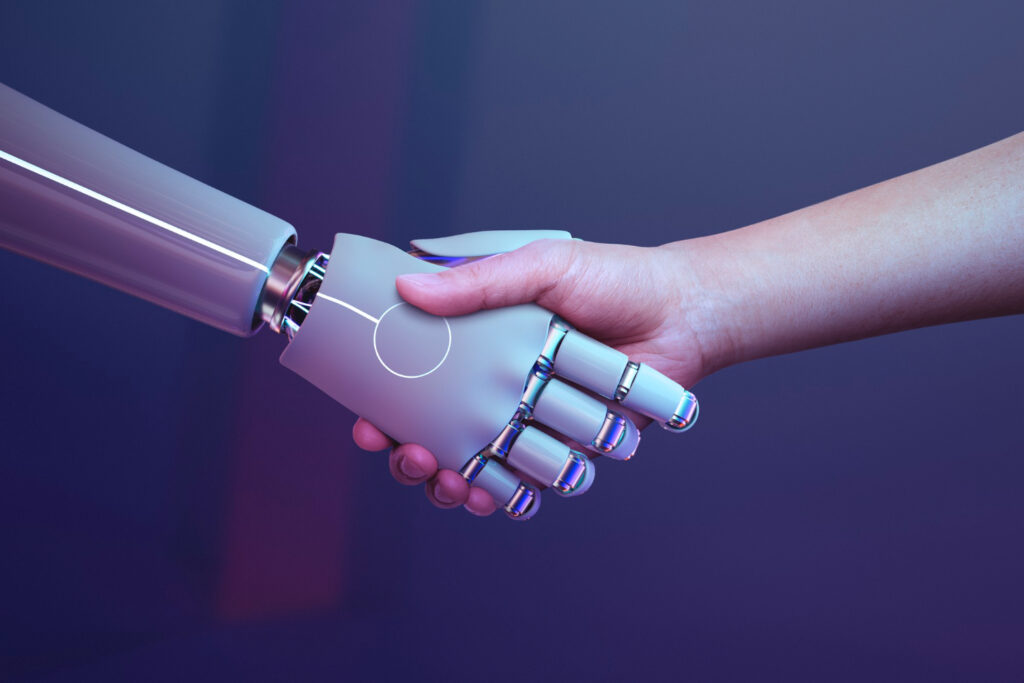The importance of effective HR staffing and hiring solutions cannot be overstated today. It is the cornerstone upon which successful companies are built, a crucial element that drives innovation, productivity, and growth. As we step into 2024, the challenge for HR professionals is not only to fill positions but to strategically align talent with the company’s vision and goals.
Effective HR staffing and hiring go beyond simply matching resumes to job descriptions. It involves understanding the unique blend of skills, experiences, and personalities that will thrive within your corporate culture. It’s about foresight—anticipating future needs and building a workforce that is resilient, adaptable, and prepared for tomorrow’s challenges.

From the initial candidate interaction to the final onboarding process, every step is an opportunity to enhance the company’s talent pool and ensure that the right individuals are in the right roles, contributing to the harmonious success of the organization.
Let’s explore how your company can leverage a recruitment strategy that not only attracts top talent but also creates a saga of high performance and sustained excellence.
Current Trends in HR Staffing and Hiring
Use of Technology and AI in Recruitment
Technology and AI are revolutionizing the recruitment landscape, making the process more efficient and effective. AI-powered tools can analyze vast amounts of data quickly, helping HR teams to identify the best candidates faster. For example, AI algorithms can screen resumes, assess candidates’ skills, and even predict their job performance based on historical data.
A 2022 survey by LinkedIn found that 67% of hiring managers and recruiters reported that AI helped them save time during the hiring process. Companies like Hilton and Unilever have successfully implemented AI in their recruitment strategies. Hilton uses AI-driven chatbots to engage with candidates, answer their questions, and schedule interviews. This has not only improved candidate experience but also freed up HR professionals to focus on more strategic tasks.
Shift Towards Remote and Hybrid Work Models
The COVID-19 pandemic has permanently changed the way we work. Remote and hybrid work models have become the new norm, offering employees greater flexibility and work-life balance.
This shift has expanded the talent pool for employers, allowing them to hire from a broader geographic area. It also presents challenges, such as managing a distributed workforce and maintaining company culture. Companies like Twitter and Salesforce have embraced permanent remote work options, recognizing that flexibility can lead to higher employee satisfaction and retention.
According to a Gallup poll, among those who have ever worked remotely, current attitudes about remote worker productivity are similar to those among U.S. adults overall — 53% think remote workers are just as productive, 20% more productive and 25% less productive.
Emphasis on Diversity and Inclusion
Diversity and inclusion (D&I) have moved to the forefront of HR priorities. Companies are increasingly recognizing the value of a diverse workforce in driving innovation and reflecting a global customer base. McKinsey’s 2020 report found that companies in the top quartile for ethnic and cultural diversity were 36% more likely to outperform on profitability.

Real-world examples include IBM and Microsoft, both of which have implemented robust D&I programs. IBM has set ambitious diversity goals and regularly publishes progress reports. Microsoft has focused on inclusive hiring practices, such as creating hiring programs for neurodiverse individuals.
Data-Driven Decision Making
The use of data analytics in HR is transforming how companies approach recruitment. By analyzing data from various stages of the hiring process, organizations can identify patterns and make informed decisions. This data-driven approach helps in improving hiring accuracy, reducing time-to-hire, and enhancing candidate experience.
For instance, Google uses data analytics to refine its hiring algorithms continuously. By analyzing data from previous hires, Google can predict which candidates are most likely to succeed in specific roles. This approach has significantly improved their hiring efficiency and quality.
Additionally, tools like applicant tracking systems (ATS) provide valuable insights into hiring metrics such as the source of hire, cost per hire, and candidate drop-off rates. These insights enable HR teams to optimize their recruitment strategies continually.
Real-World Examples
- Unilever: Unilever uses AI-driven tools for resume screening and initial candidate assessments. This approach has reduced the time spent on these tasks by 75%, allowing recruiters to focus on building relationships with top candidates.
- Goldman Sachs: Goldman Sachs employs game-based assessments to evaluate candidates’ problem-solving and cognitive abilities. This innovative approach has led to better matches between candidates and roles, improving overall job performance and satisfaction.
- Salesforce: Salesforce has embraced a flexible work model, allowing employees to choose between remote, in-office, or hybrid work arrangements. This flexibility has increased employee engagement and retention.
Using PerspectAI‘s Assessments for HR Staffing and Hiring
Pre-employment assessments play a vital role in the hiring process by providing objective data about candidates’ skills and abilities. These assessments come in various forms, including cognitive, technical, and interpersonal evaluations. One innovative approach gaining popularity is game-based assessments by PerspectAI, which offer several advantages:
- Engaging Experience: Game-based assessments provide an interactive and engaging experience for candidates, making the evaluation process enjoyable.
- Accurate Insights: These assessments can accurately measure a range of skills, from problem-solving abilities to teamwork and communication skills.
- Real-World Scenarios: By simulating real-world scenarios, game-based assessments can reveal how candidates might perform in actual job situations.
Best Practices for Leveraging HR Staffing Solutions
In the ever-evolving world of HR staffing, adopting best practices is essential for maximizing the effectiveness of your recruitment strategies. Here are seven key best practices that will help you leverage HR staffing solutions to their fullest potential:
1. Embrace Technology with a Human Touch
While technology is a powerful tool, remember that the human element remains crucial. Use AI and automation to streamline repetitive tasks like resume screening and initial candidate interactions, but ensure that your HR staffing team is involved in the critical stages of the recruitment process. Personal touches, such as tailored communication and personalized interviews, can significantly enhance candidate experience and engagement.

How does your current tech stack balance automation and human interaction? Consider conducting a review to identify areas where a personal touch could improve the candidate experience.
2. Prioritize Data-Driven Decision Making
Leverage data analytics to inform your hiring decisions. Use insights from applicant tracking systems (ATS) and other data sources to understand trends, measure the effectiveness of different recruitment channels, and refine your hiring strategies. Data-driven decisions can help you identify the most promising sources of talent and optimize your recruitment process.
Review your recruitment data regularly. Are there patterns or trends that could inform your next hiring strategy? Set up a dashboard to track key metrics and analyze performance.
3. Focus on Candidate Experience
A smooth and positive candidate experience can significantly impact your employer brand. Ensure that your application process is user-friendly, provide timely feedback, and maintain clear communication throughout the recruitment journey. A great candidate experience not only attracts top talent but also enhances your company’s reputation.
Conduct candidate experience surveys to gather feedback on your recruitment process. What are candidates saying about their experience, and where can you make improvements?
4. Implement Robust Diversity and Inclusion Practices
Diversity and inclusion are not just buzzwords; they are integral to building a dynamic and innovative workforce. Develop strategies to attract and retain diverse talent, such as using inclusive job descriptions and ensuring your recruitment process is free from bias. Regularly review your D&I metrics and make adjustments as needed.
Evaluate your current D&I initiatives. Are there gaps or areas for improvement? Consider setting specific diversity goals and tracking progress toward achieving them.
5. Adapt to Remote and Hybrid Work Trends
With the rise of remote and hybrid work models, it’s essential to adjust your recruitment strategies accordingly. Ensure your hiring process is equipped to handle remote interviews and onboarding, and consider how you can attract talent who are comfortable with or prefer these work arrangements.
How well does your recruitment process support remote and hybrid work arrangements? Explore tools and platforms that can enhance virtual interviewing and onboarding experiences.
6. Continuously Train and Develop Your HR Team
Your HR staffing team should be well-versed in the latest recruitment tools and trends. Invest in ongoing training and professional development to keep your HR professionals updated on new technologies, best practices, and legal requirements. A knowledgeable HR team is better equipped to implement effective staffing solutions.
Schedule regular training sessions for your HR team. Are there new tools or techniques they should learn about? Encourage continuous learning and professional growth.
7. Measure and Optimize Recruitment Strategies
Regularly assess the effectiveness of your recruitment strategies and make data-driven adjustments. Track key metrics such as time-to-hire, cost-per-hire, and quality-of-hire to identify areas for improvement. Implementing a process for continuous feedback and optimization will help you refine your recruitment efforts over time.
Set up regular reviews of your recruitment metrics. Are there any trends or areas where improvements could be made? Use this data to inform your next steps and refine your strategies.
Ready to transform your hiring process? Elevate your recruitment strategy and find the perfect fit for your team with data-driven insights and engaging evaluations. Visit our website today to see how PerspectAI can revolutionize your hiring!